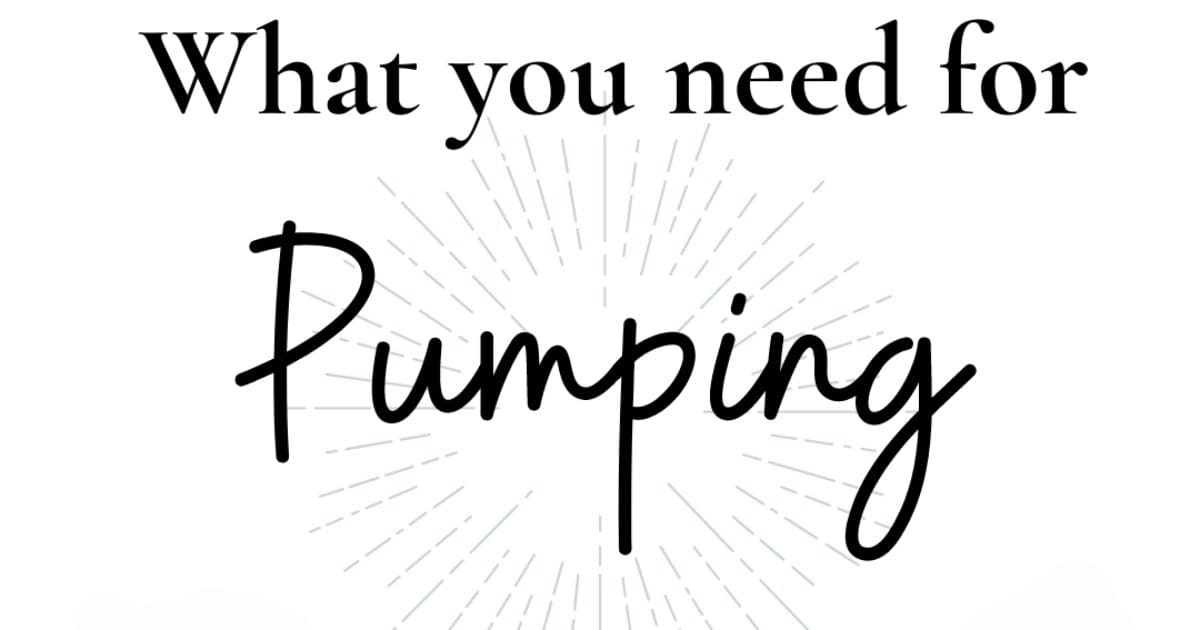What You Really Need To Pump Milk For Your Baby
This is the second entry in a three part series on what you need for your chosen method of feeding your baby. Last time, we talked about what you need when breastfeeding and up next will be what you need when bottle-feeding. So if you are planning on exclusively pumping, check out that blog as well so you can be all set for bottle-feeding your baby pumped milk.
Whether you are exclusively pumping, building up a stash to return to work or just want some milk on hand so someone else can feed the baby, you will find these tools will make your experience pumping easier and more comfortable.
Helpful Tips For Pumping Breastmilk
But first, a personal note:
This will surely be it’s own blog entry at some point, but I exclusively pumped for 8 months for my first baby. It was a big undertaking! And one I’m so glad I did. It wasn’t my first choice. I had planned to breastfeed. But when that didn’t work out, I did what felt was right for me and pumped.
This list is close to my heart because I had a hard time finding resources like this when I was googling information to make pumping as easy as possible and it made me feel like I was the only one who was in this gray area.
So if you’re in the same boat, I hope this is helpful for you and know that you aren’t alone. There are a lot of others out there making the same great choice for their baby. You are doing a fantastic job and you should be very proud of yourself.
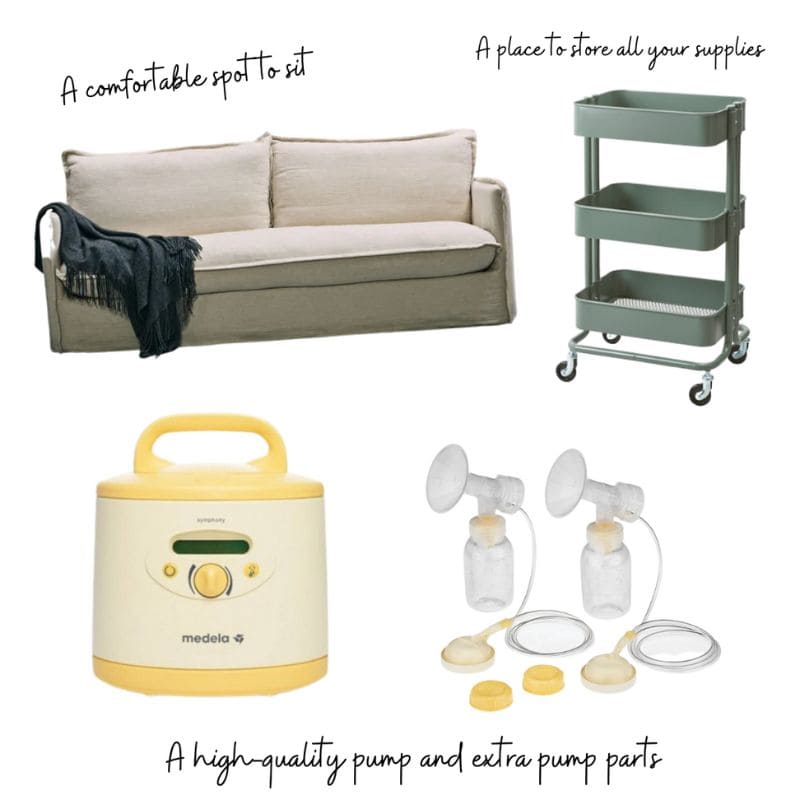
Let’s Get Comfortable!
This may seem like a no-brainer, but have a designated “pumping spot” that is comfortable as you will be spending a lot of time there. Have a phone charger, a book and the remote within reach. Make sure you can rest your back and maybe put up your feet. A lot of pumping parents find that having a place to keep all your supples, like this Raskog cart from IKEA, can help keep everything organized and within arms reach.
The pump itself is, of course, really important! Yes, your insurance will likely supply you with one and that can work if you are pumping occasionally. But if you are planning on exclusively pumping or using it several times a day, a hospital grade pump is a great investment. It’s bigger and heavier but the motor makes pumping more comfortable and efficient.
When I was exclusively pumping, I rented two hospital grade pumps. One for home and one for work. It was worth it to me to have this better pump to ensure I got the amount of milk my baby needed and not to have to lug the pump every day. If you can afford it, renting a hospital grade pump is the way to go (you can find them at many hospital breastfeeding clinics or baby boutiques that carry breastfeeding supplies).
Another thing that is often overlooked is the pump parts. There are the flanges and valves and tubing (and maybe other pieces depending on which pump you have). Google your pump and parts and make sure you have a few of each thing on hand. Replace them often to make sure your pump is working efficiently.
Tools For Breastfeeding
A pumping bra will help keep the flanges in the correct place and will let you relax and do other things while you are pumping. Don’t skip this. You will be happy you have one!
A lot of parents find it helpful to apply nipple cream or even coconut oil before they put on the flange to make things more comfortable and to avoid soreness. Another thing that helps: having the correct size flange. Yes, there are different sizes and it does make a difference! A lactation counselor can help you get the right fit or you can google your pump and flange sizes to see how your nipple should look when the pump is turned on.
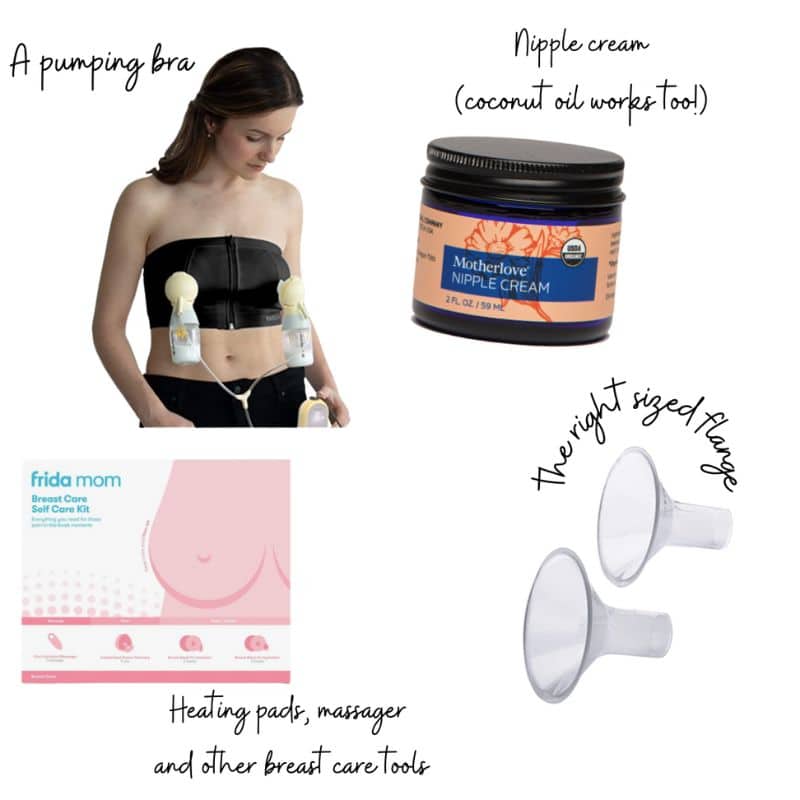
There are other things you can get to keep your breasts and nipples healthy and comfortable when pumping. Frida Mom makes a breast care kit that has heating pads, a massager and “masks” to use on your breasts depending on what you need.
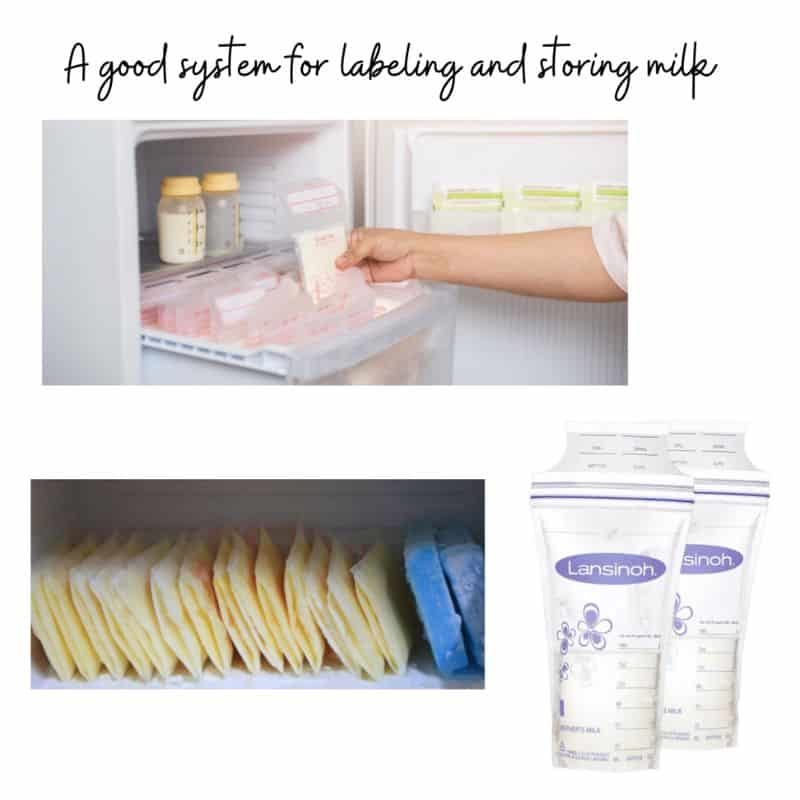
The Logistics
The more organized you are, the easier life as a pumping parent will be! Make a plan for how to collect, label and store milk.
Communicate this to anyone else feeding the baby.
Will you be freezing any? Will it go in the fridge? How will you know which milk is the oldest and should be used first? Some people put the bottle in a certain order in the fridge so anyone making a bottle knows to grab the one in the front or on the left or [insert whatever you decide here!]. In the next entry on bottle feeding, I also cover the system you will want to have for washing and sanitizing bottle (and pump) parts so look there for more tips!
Make Sure To Take of Yourself
Pumping is lactation and lactation asks a lot of your body. Best way to keep your supply up when pumping? Pump often (supply and demand!) and make sure you are eating and drinking plenty during the day. But beyond just the “production” value, eating and drinking and resting is important because you are important and you need to nourish your body. And you deserve to relax when you are spending hours pumping so turn on Parks and Rec (or whatever you want to watch) and make your pumping sessions into an enjoyable break in your day.
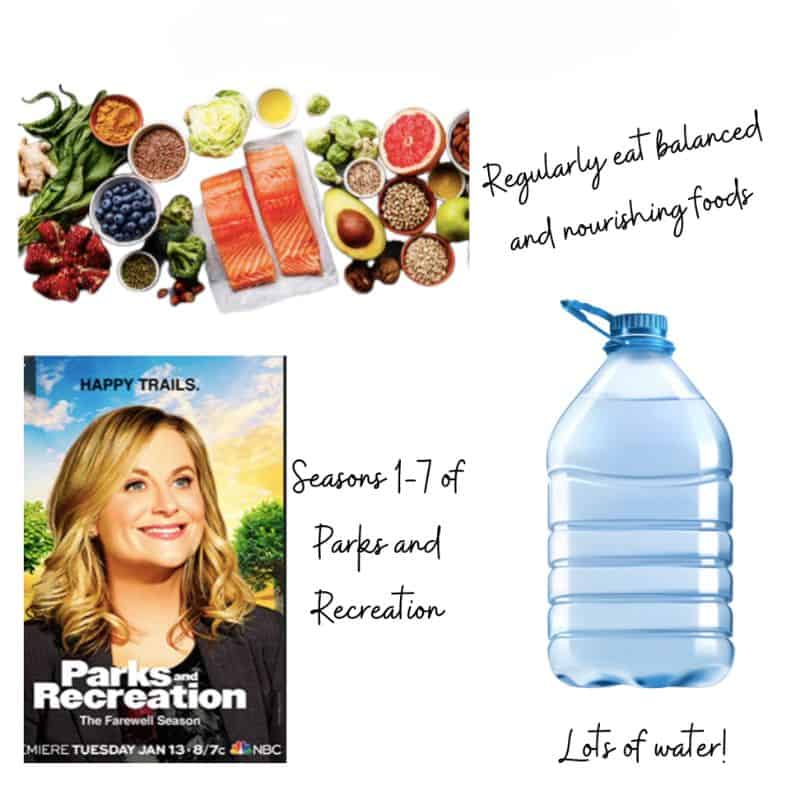
In my role as a postpartum doula, I support all parents in their chosen method for feeding their babies. Whether you are breastfeeding, bottle-feeding or pumping, a postpartum doula can offer information, resources and encouragement. Click here to learn more about how I can support you when your baby arrives!
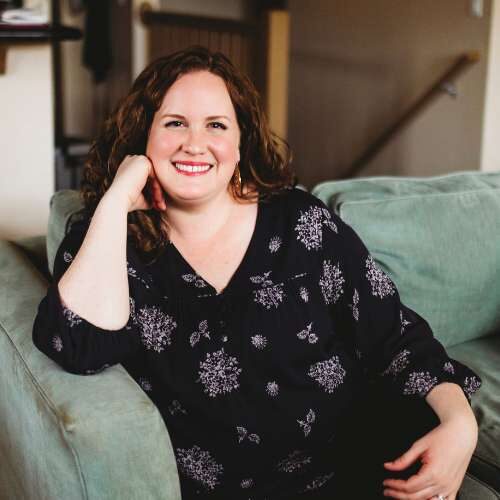
Leah Schilling
NAPS, ICEA, CLE, MEd
Leah Schilling is a certified postpartum doula and childbirth educator. She teaches group and one-on-one childbirth, infant feeding, and postpartum preparation classes to expectant parents. As a postpartum doula, she provides in-home support and is a new parent support group facilitator in the Seattle area.

